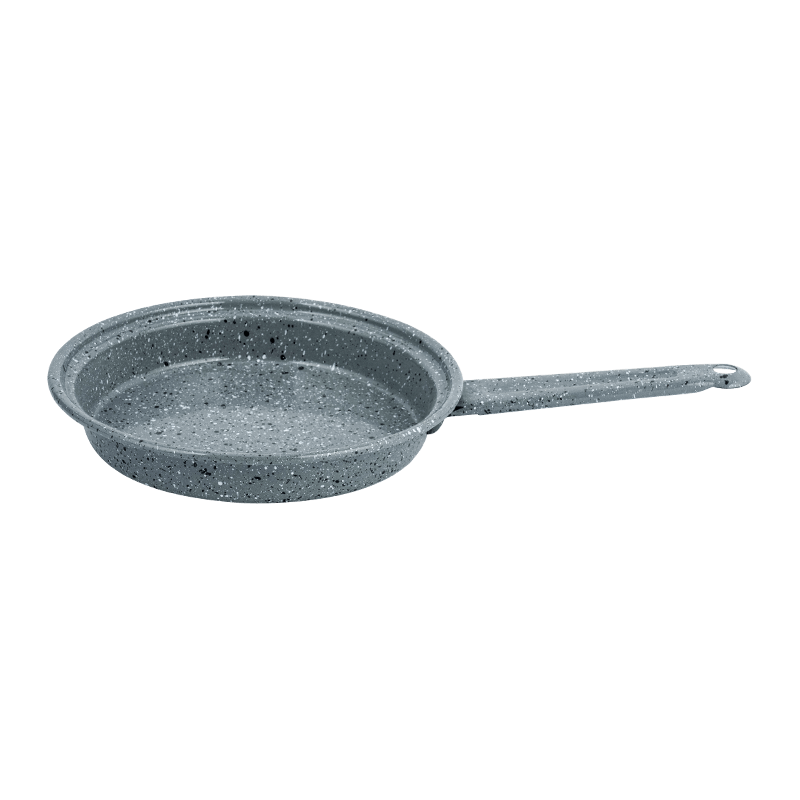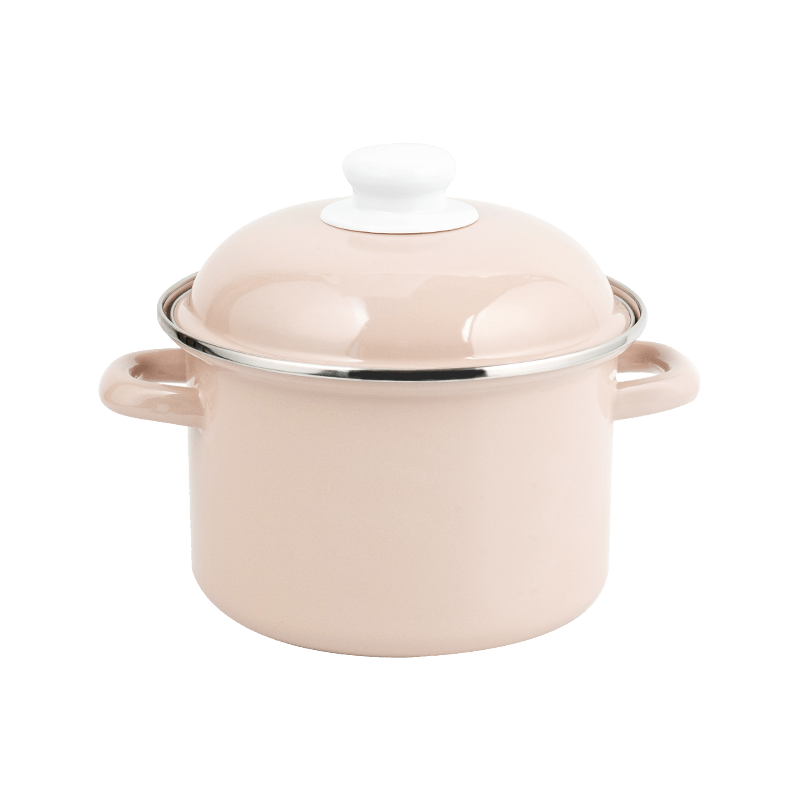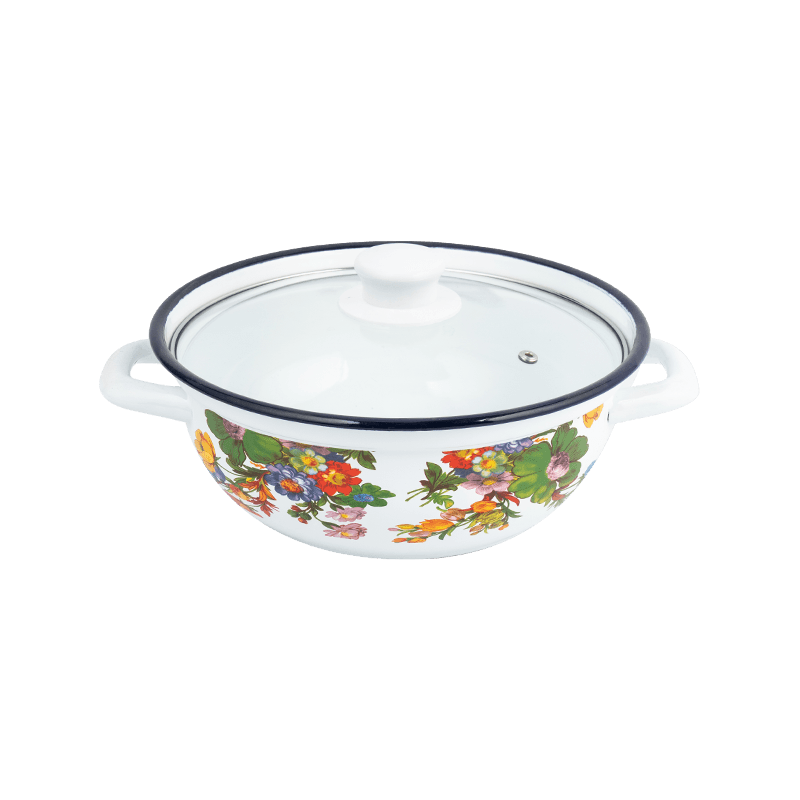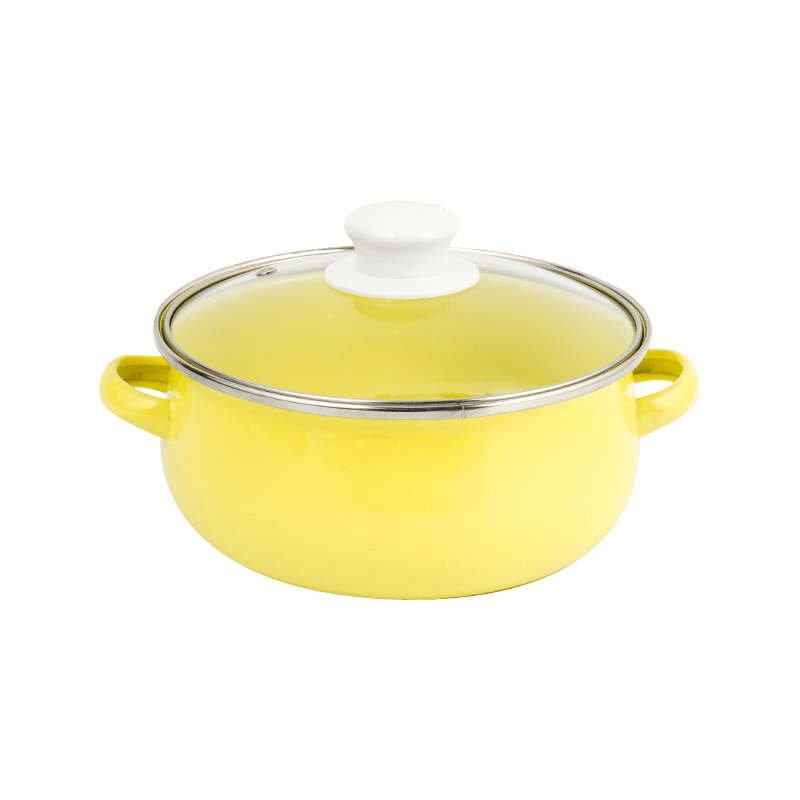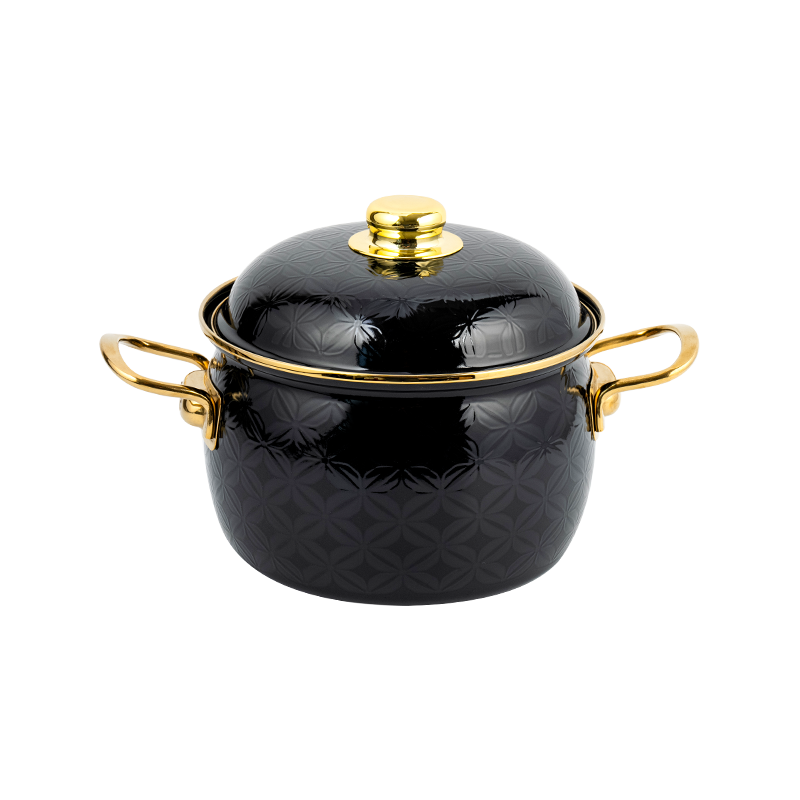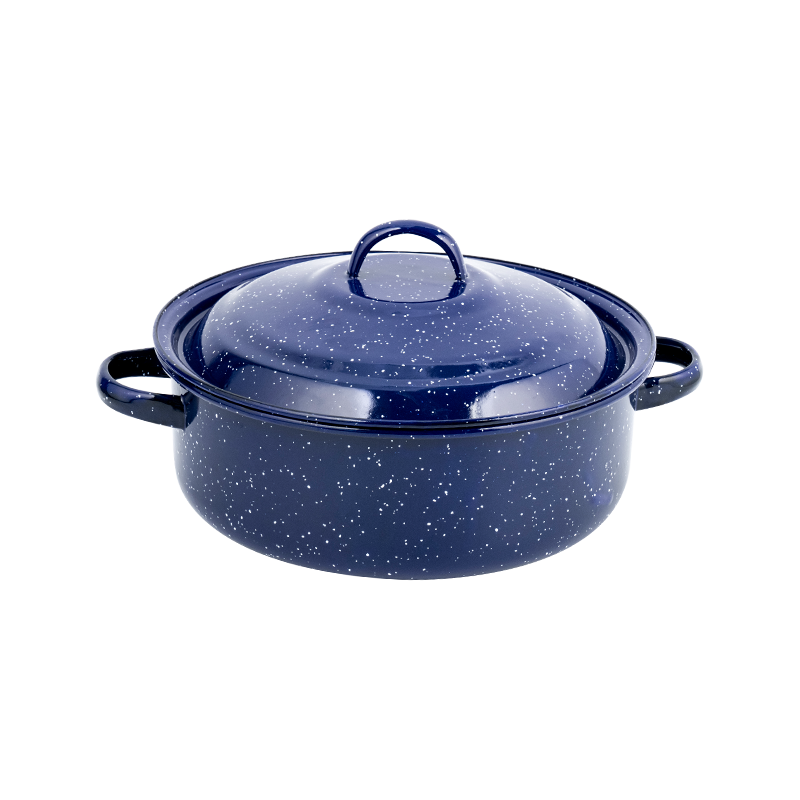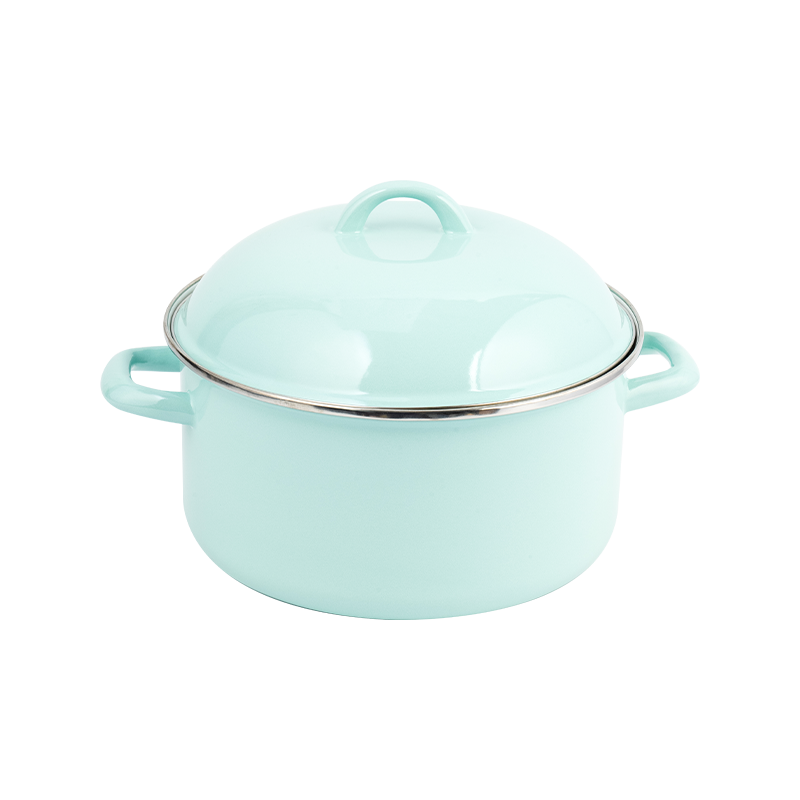Enamel pots have long been valued in professional and home kitchens for their even heat distribution, non-reactive surface, and durability. Among the various designs available, the double handle enamel pot has gained attention for its potential safety benefits, particularly in reducing the risk of burns.
Material Properties and Heat Conduction
Enamelware consists of a metal core, typically cast iron or steel, coated with a layer of glass-like enamel. This coating provides a partial thermal barrier, meaning it heats up more slowly and retains heat longer than bare metal. However, enamel itself can still reach high temperatures during cooking. The double handle enamel pot uses the same material composition as single-handle models, so its primary advantage does not stem from material differences but rather from design improvements.
The Role of the Double-Handle Design
The key feature of a double handle enamel pot is its two handles located on opposite sides. This design offers several ergonomic and safety benefits:
-
Improved Weight Distribution: With two handles, the weight of the pot and its contents is balanced more evenly. This reduces the likelihood of tilting or accidental spills, which are common causes of burns.
-
Secure Grip and Handling: Two handles allow the user to hold the pot firmly with both hands, minimizing the risk of slipping—especially when moving heavy or hot contents. This is particularly useful for larger pots where weight and stability are concerns.
-
Distance from Heat Source: Handles on enamel pots are generally designed to remain cooler than the pot body. In a double-handle design, both handles are typically positioned further from the direct heat source, enhancing their heat resistance properties.
Comparative Safety in Practical Use
In real-world scenarios, the double handle enamel pot can contribute to burn prevention in specific contexts:
-
Lifting and Pouring: When transferring hot liquids or foods, the two-handle design offers greater control and reduces the chance of splashing or mishandling.
-
Placement and Storage: The balanced structure makes it easier to place the pot securely on surfaces without accidental contact with heated areas.
It should be noted, however, that no pot design can fully eliminate burn risks. Proper handling techniques and the use of protective gear such as mitts or towels are still advised.
Limitations and Considerations
While the double handle enamel pot offers functional advantages, it is not inherently heat-proof. Prolonged heating can cause handles to become warm, and the enamel surface can still scorch if overheated. Users should always exercise caution regardless of the design.
The double handle enamel pot provides measurable safety benefits over single-handle designs due to its balanced structure, improved grip, and reduced spill risk. While it does not entirely prevent burns, it minimizes common handling-related accidents. For those prioritizing safety and stability in cookware, this design represents a thoughtful and practical option.
Whether used for simmering, boiling, or stewing, the double handle enamel pot combines traditional enamel advantages with modern safety-minded design.

 English
English 中文简体
中文简体




